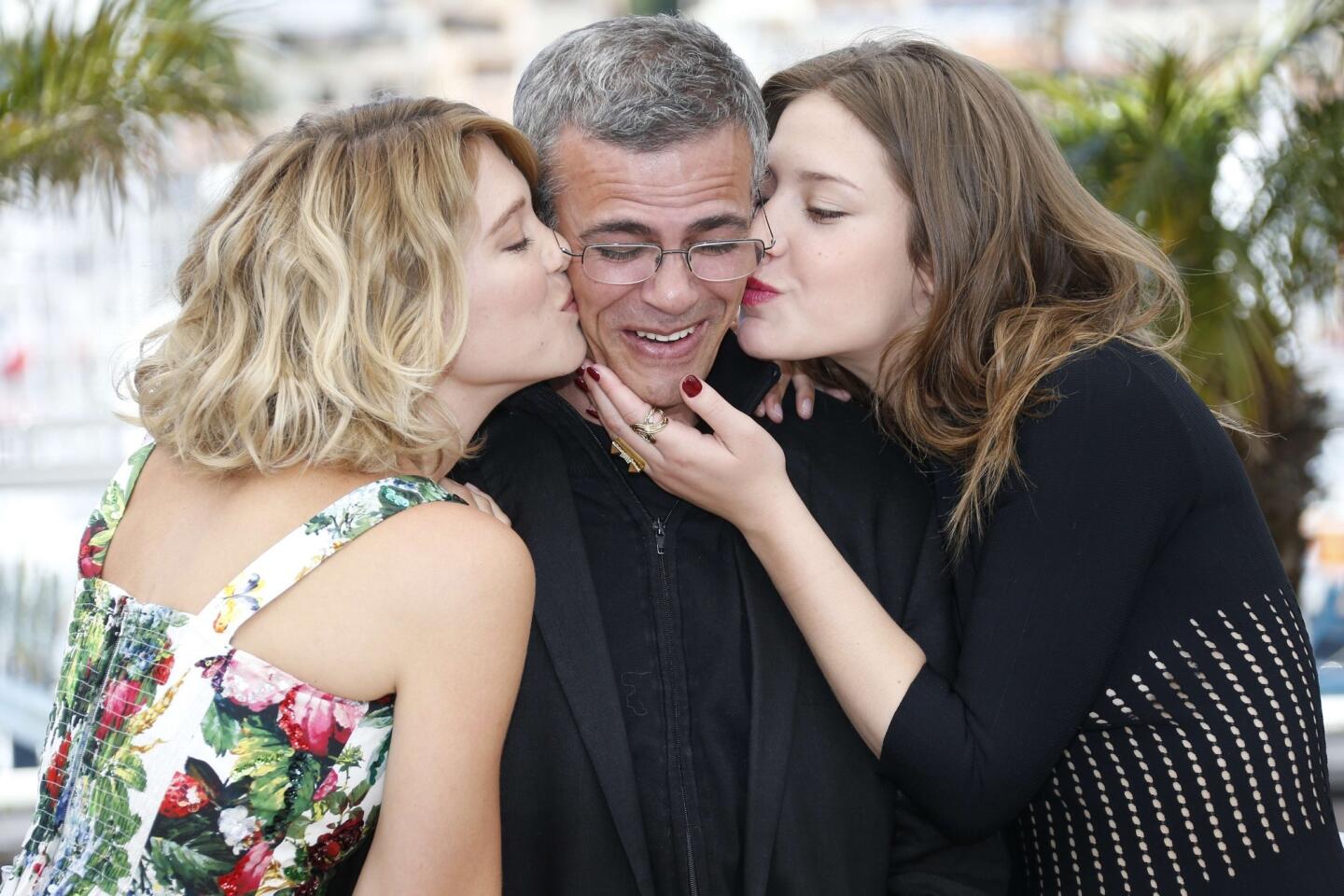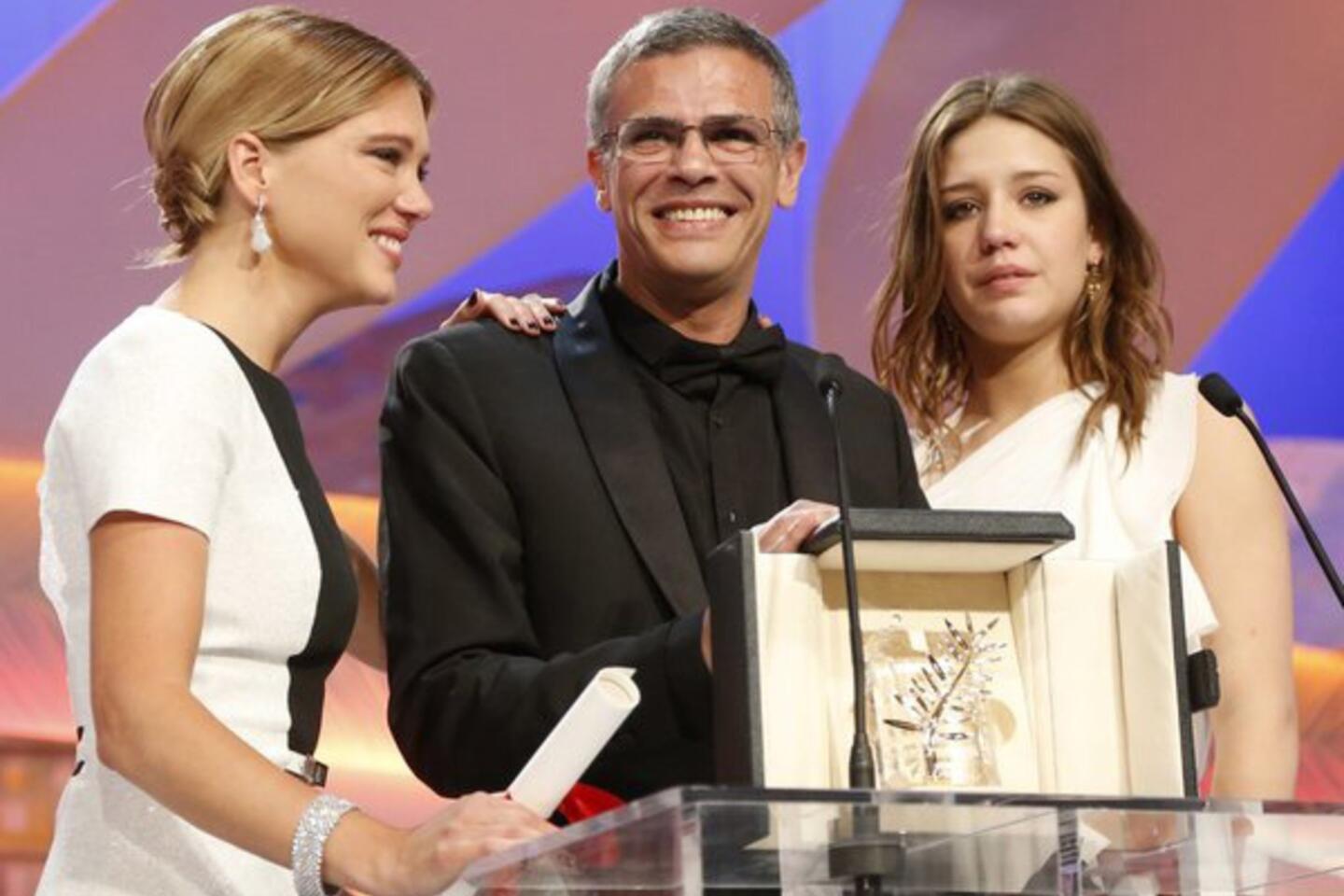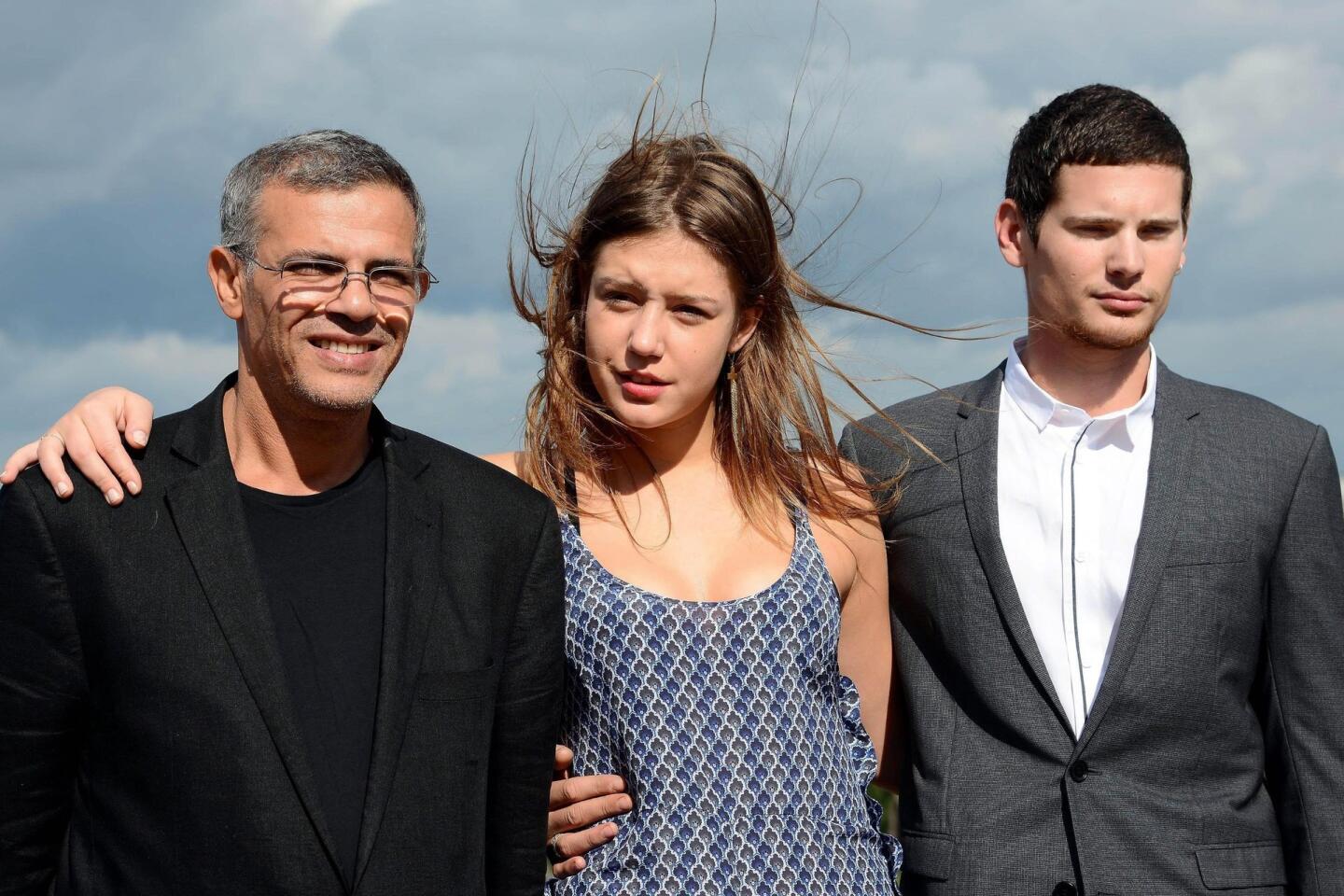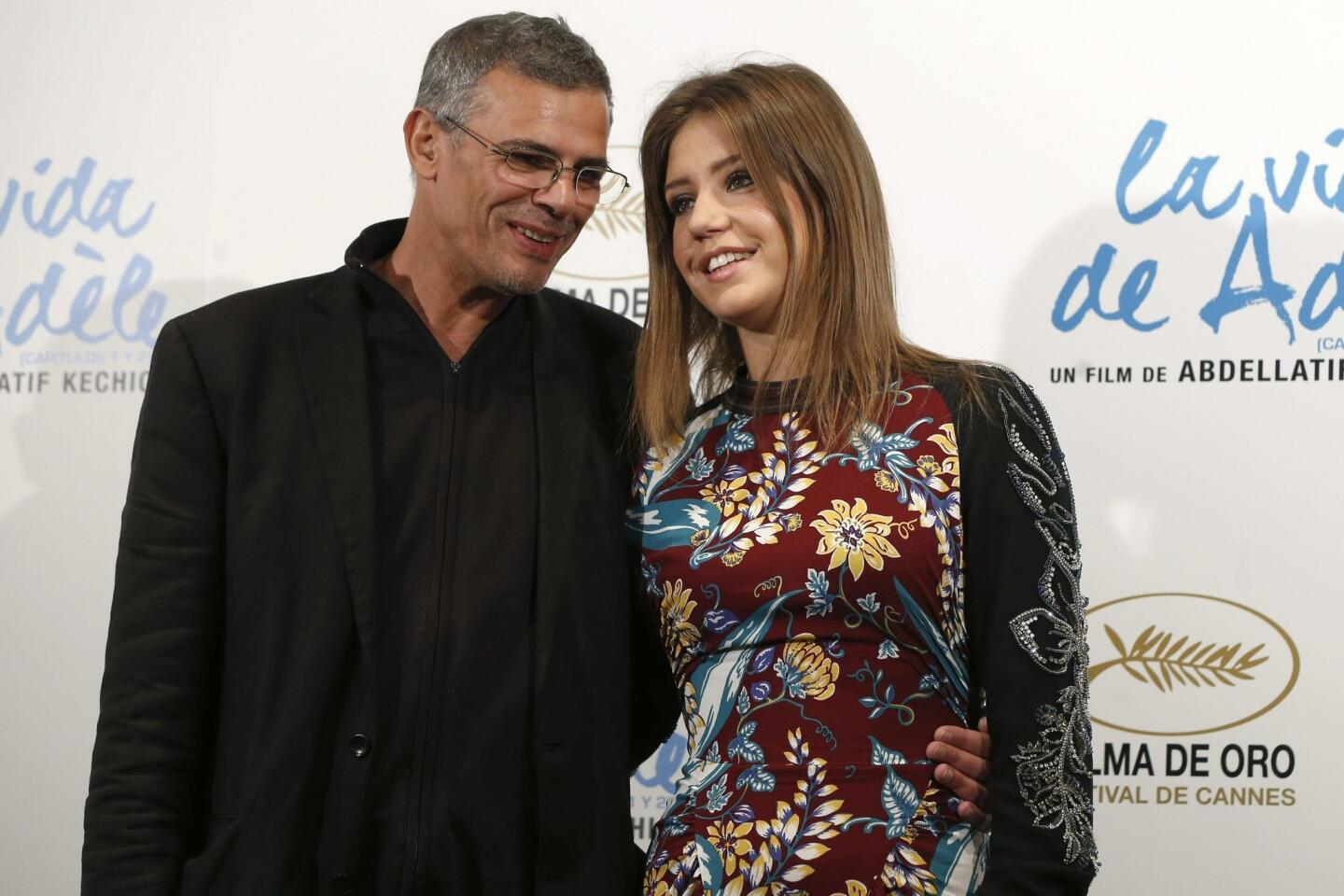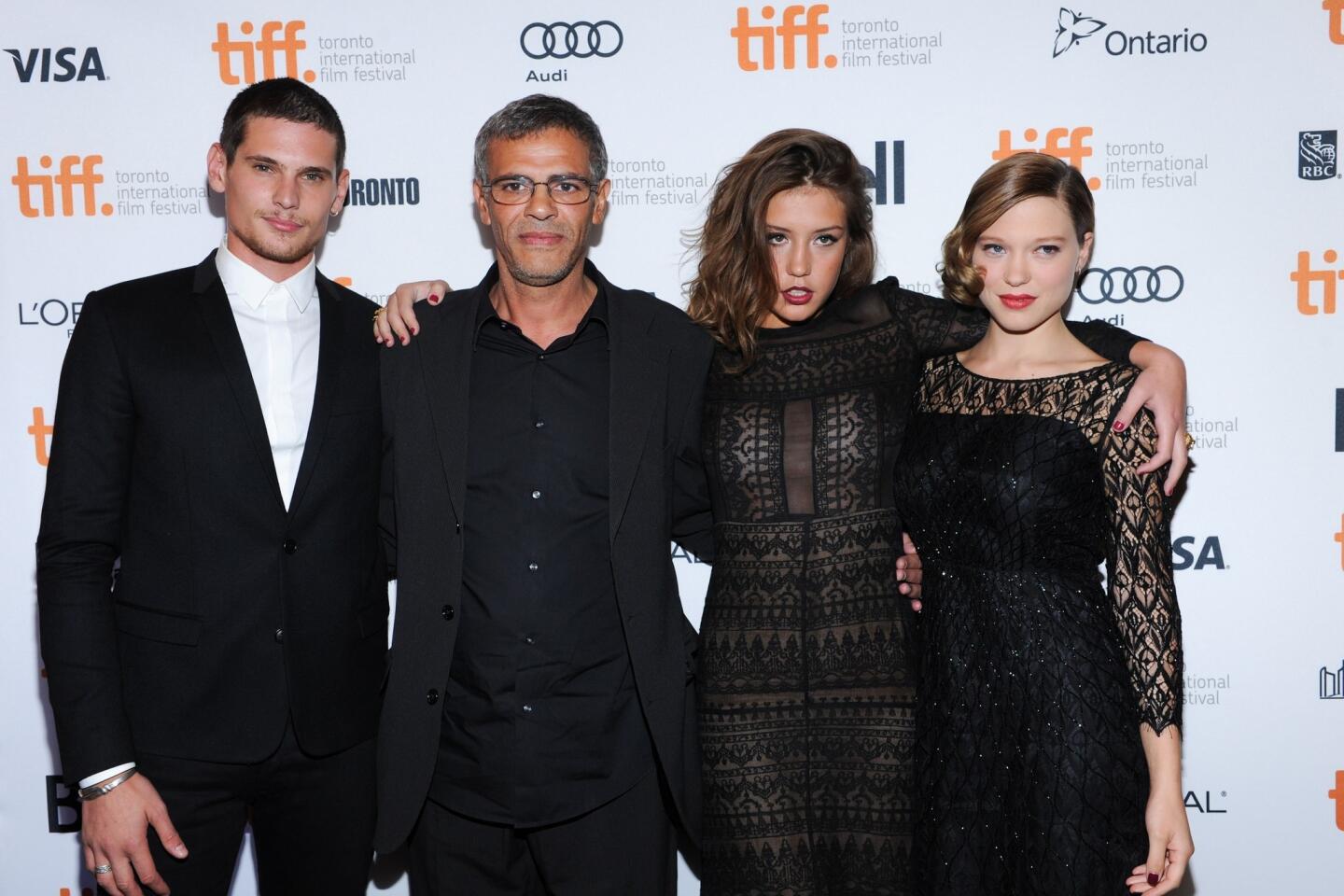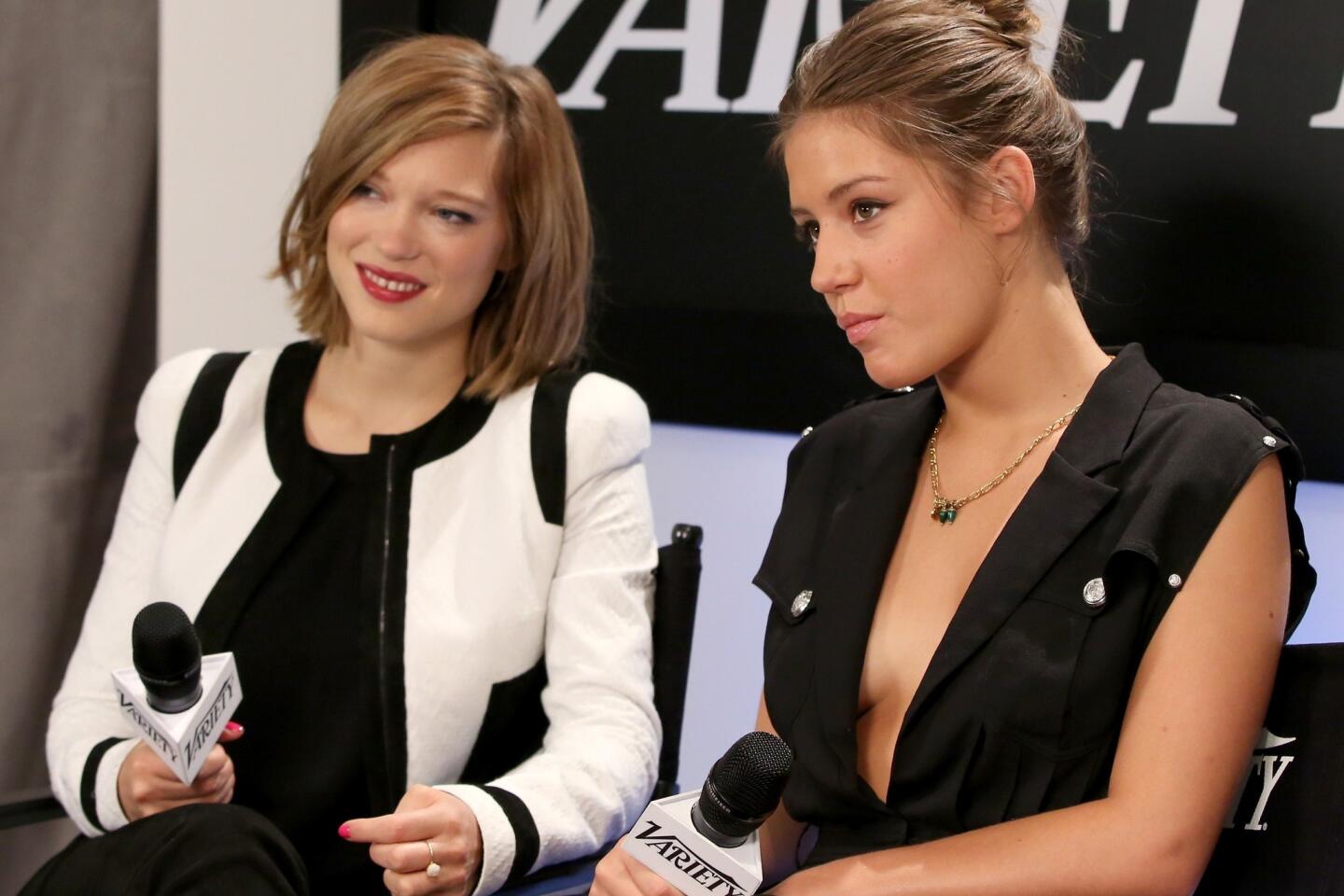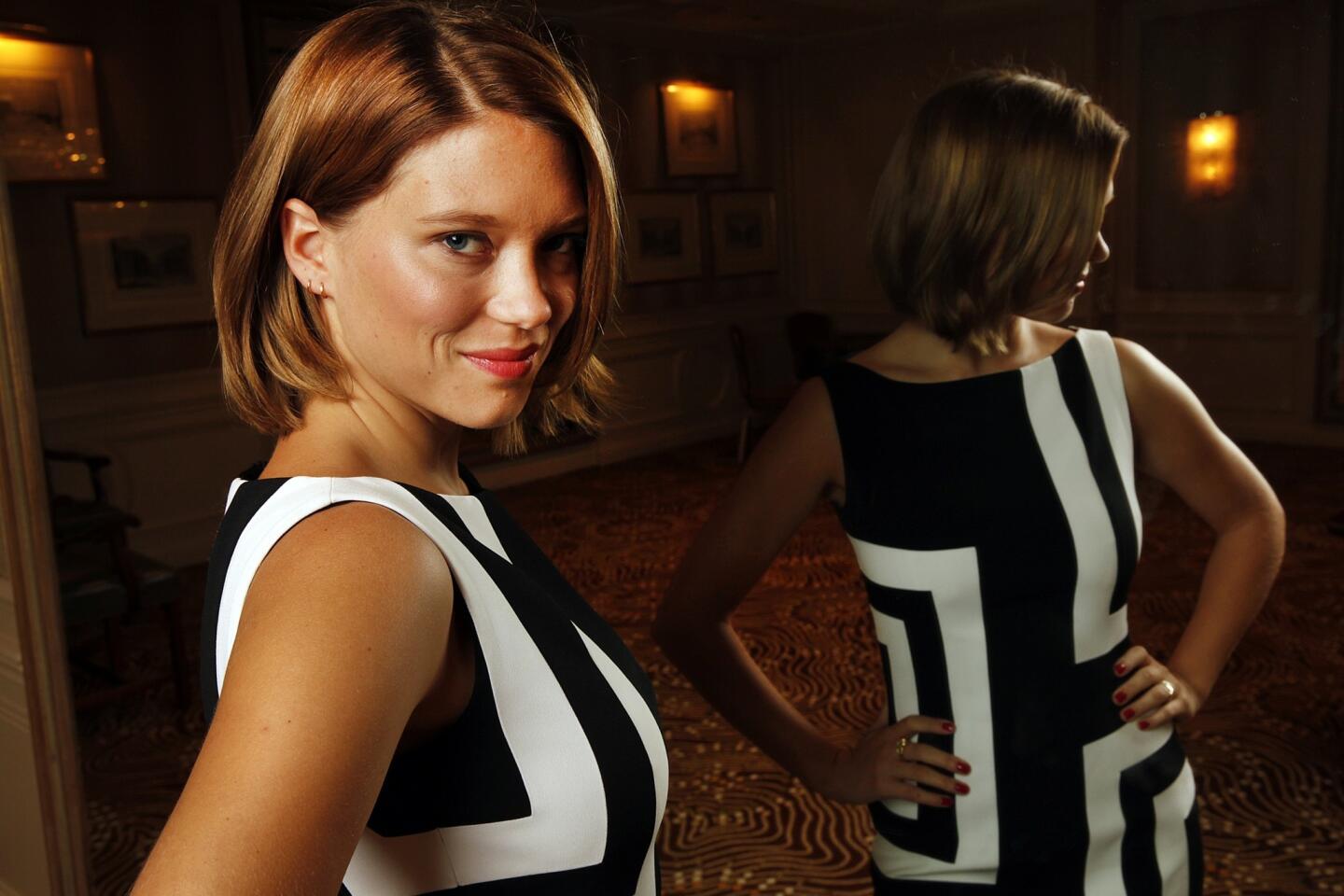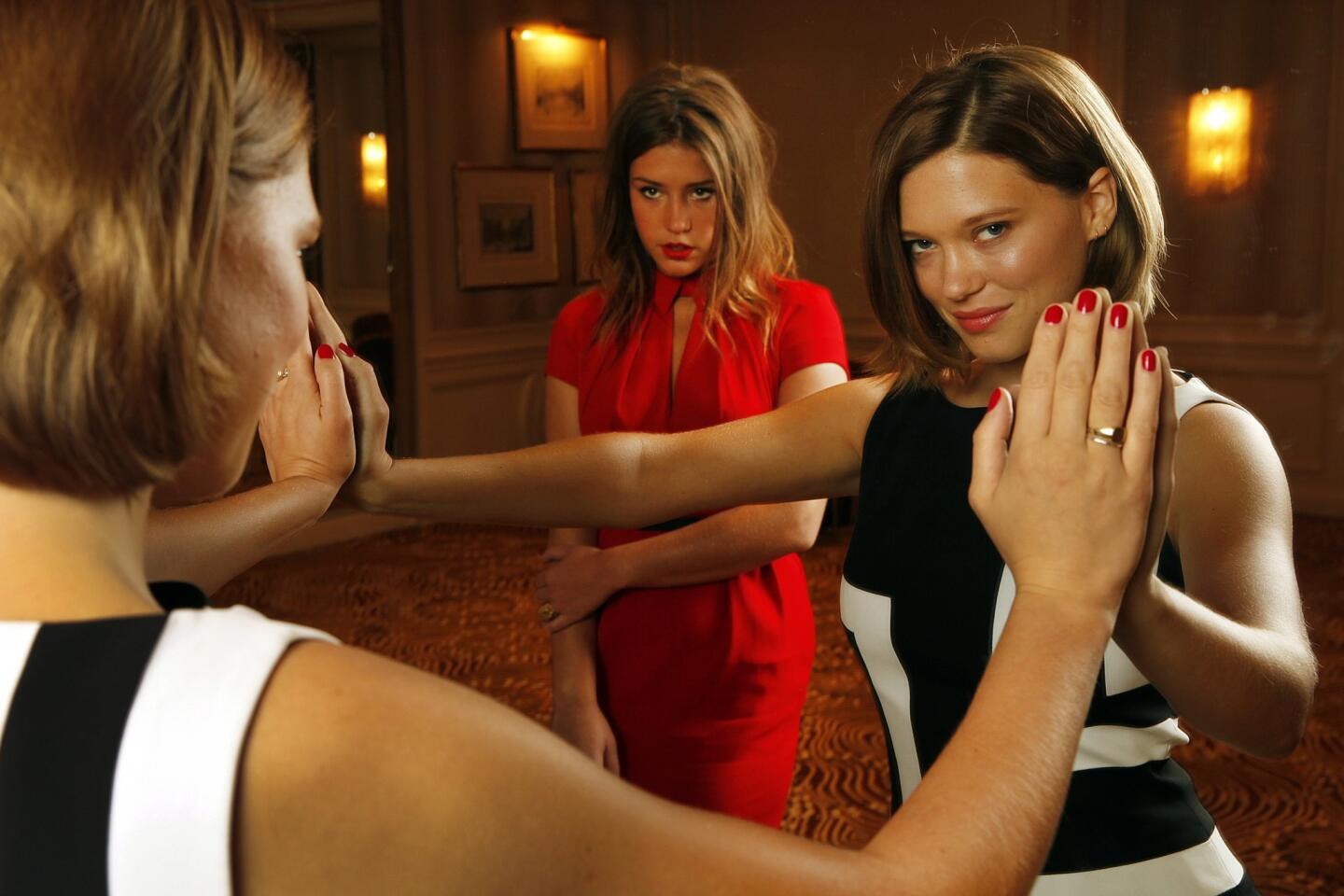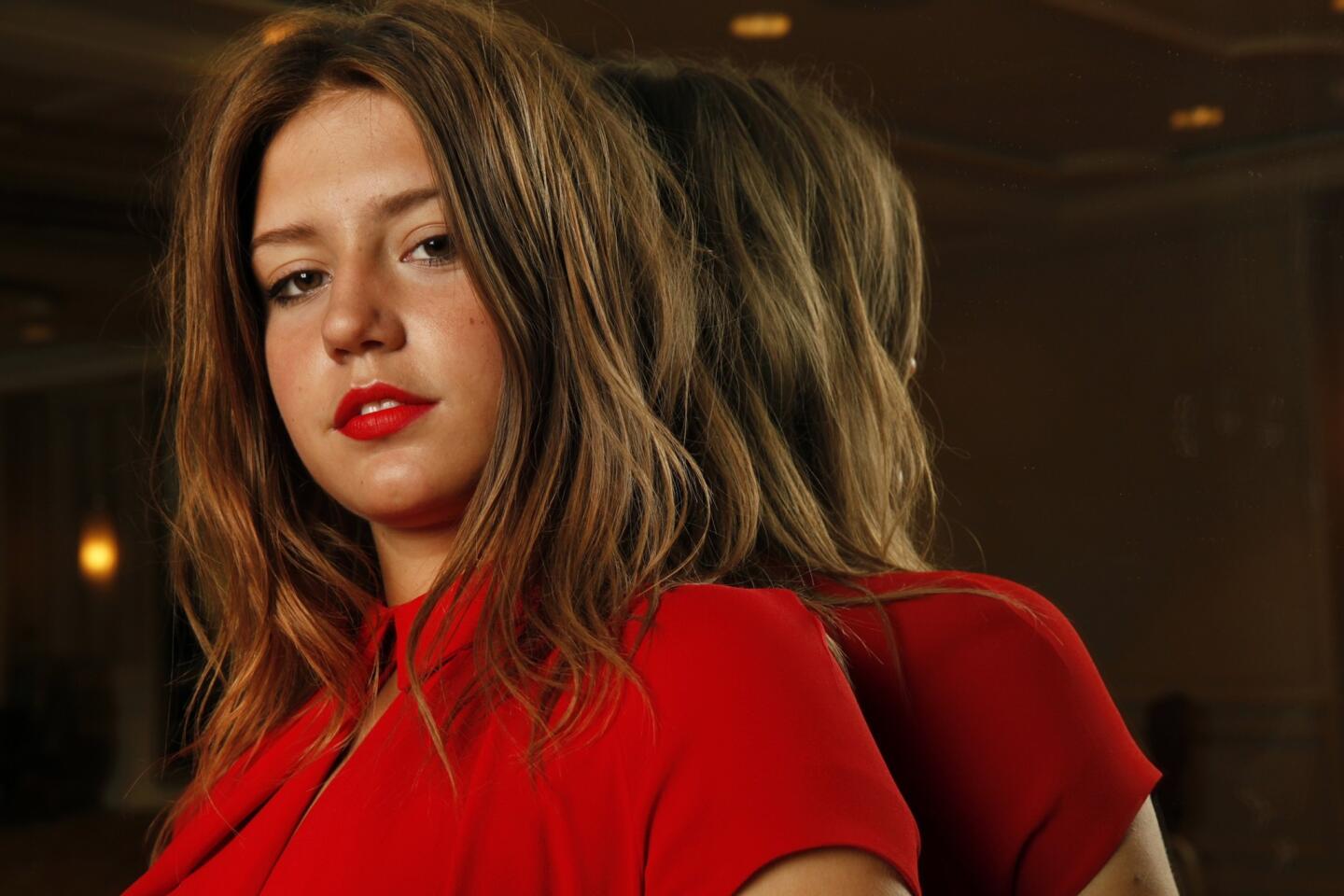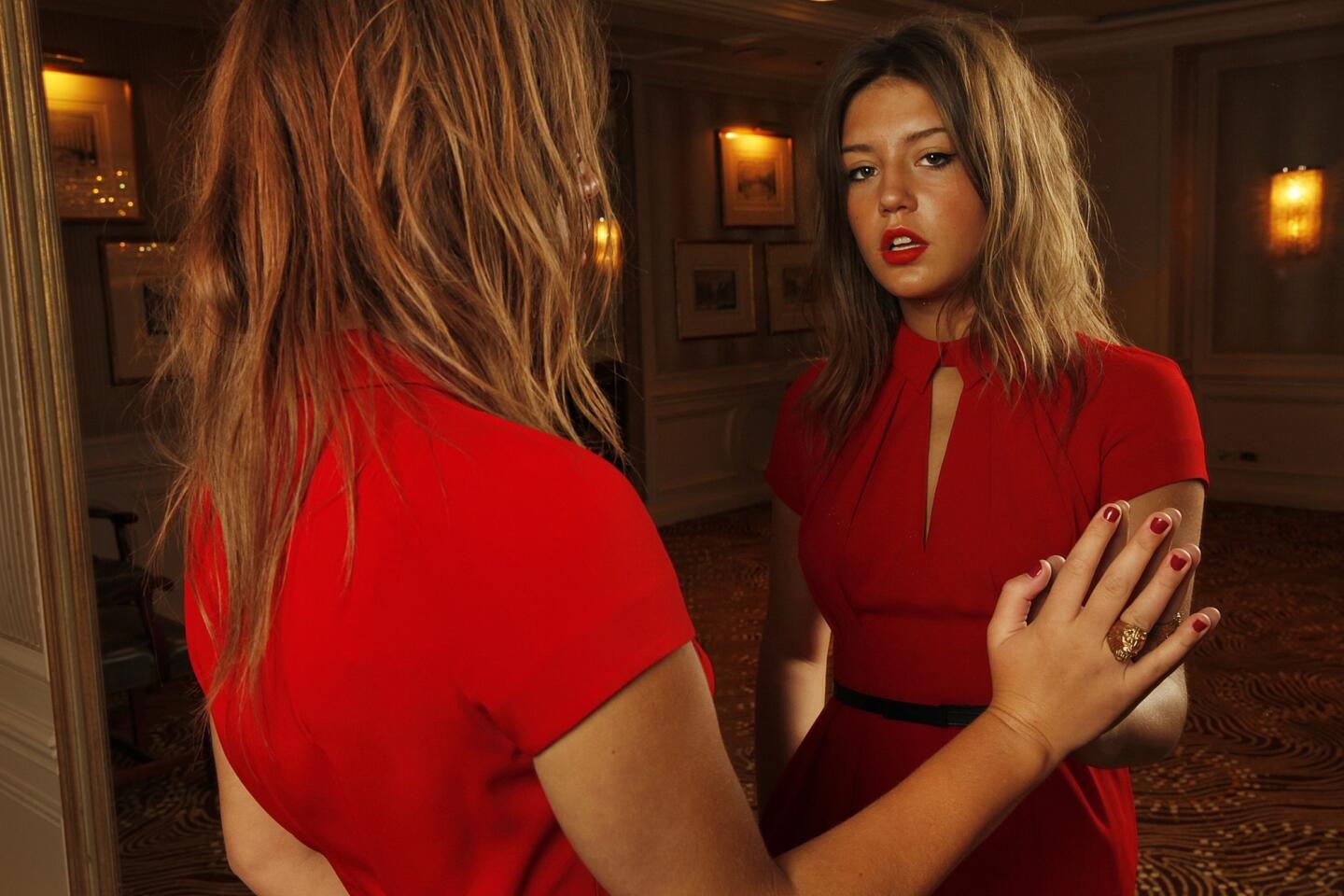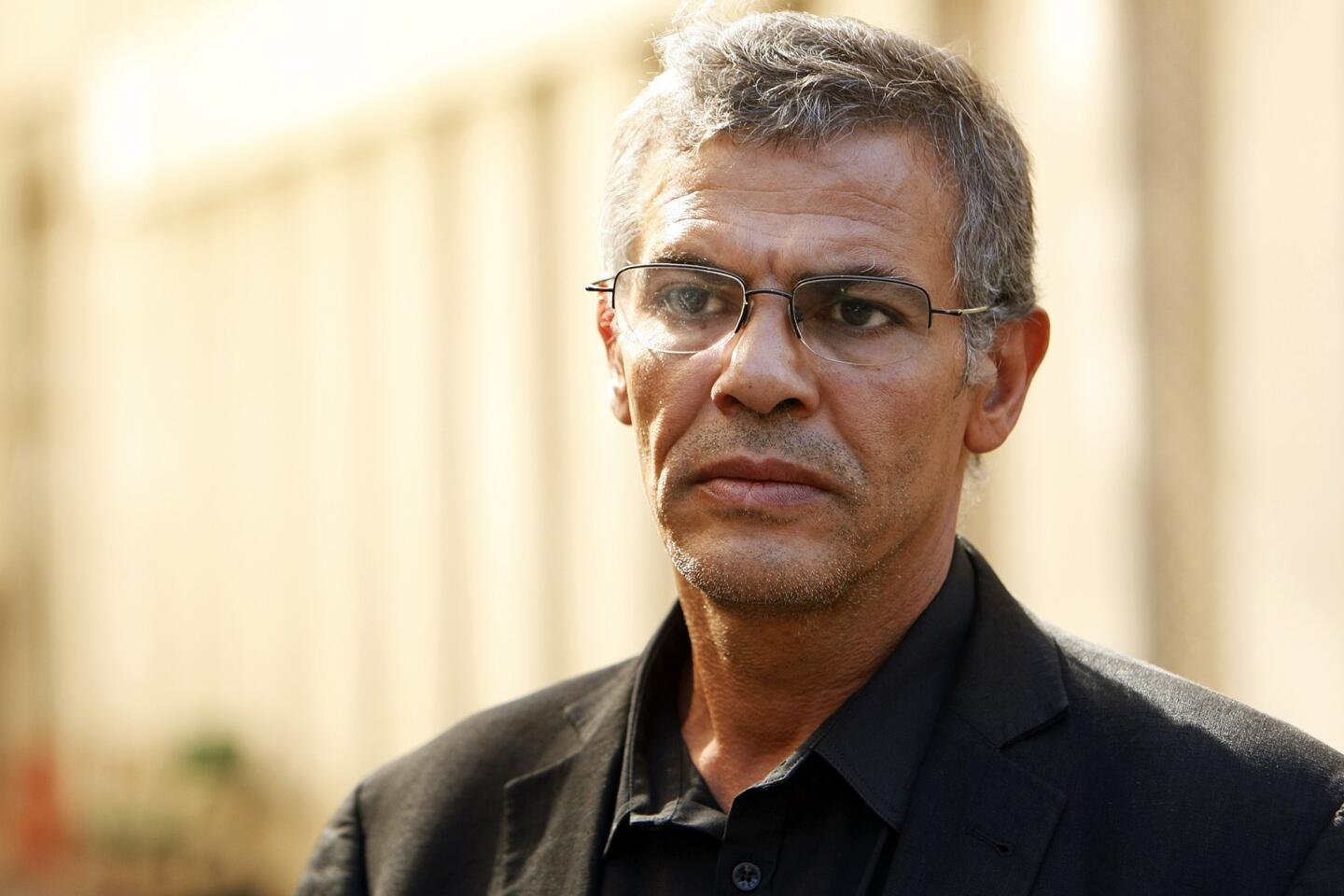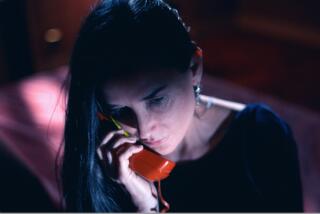âBlue Is the Warmest Colorâ raises passion, emotion off-screen too
Passion. Triumph. Heartbreak. Betrayal. Renewal. This describes not only the story told in âBlue Is the Warmest Colorâ but also in many ways the tempestuous, topsy-turvy saga the French filmâs director and two lead actresses have themselves faced since the movieâs world premiere at the Cannes Film Festival in May.
The film, opening Oct. 25 in Los Angeles, is an epic-length telling of a most intimate story. With a running time of nearly three hours and a story that spans some five years, the film explores the relationship between a young woman named Adèle (Adèle Exarchopoulos), who wants to be a schoolteacher, and a slightly older, more worldly aspiring artist named Emma (LĂŠa Seydoux). The two come together, fall in love and fall apart, with an emphasis on Adèleâs burgeoning sense of self.
Adapted from a graphic novel by Julie Maroh (with a screenplay credited to director Abdellatif Kechiche and Ghalya Lacroix), the film is dense with themes and ideas regarding romance, personality, family, friendship, class and the power of erotic attraction to scramble the senses. Where Marohâs source material is deeply concerned with how homosexuality is accepted in French society, Kechiche pushes the adaptation toward more universal ideas.
PHOTOS: âBlue Is the Warmest Colorâ: The women, the scenes, the director
âBefore anything else I wanted it to be a love story. My job as a director is not to make a statement about homosexuality but about these two characters and their profound love story,â said Kechiche in Los Angeles last month. âThis is not a political statement, this is about two people loving. Anybody can identify with this, a man or a woman.â
The Tunisian-born, Paris-based Kechiche, 52, though perhaps little known in the United States, is a major director in France. His films âThe Secret of the Grainâ and âGames of Love and Chanceâ both won best picture, director and screenplay at the Cesar awards, commonly referred to as Franceâs Oscars. Seydoux, 28, is a rising international star who has appeared in such English-language films as âInglourious Basterds,â âMidnight in Parisâ and âMission Impossible: Ghost Protocol.â Exarchopoulos, 19, has played small roles in a number of films, including the recent American indie âI Used to Be Darker,â but this is without question her breakout role.
In an unusual move, Cannesâ prestigious top prize of the Palme dâOr, presented by a jury headed by Steven Spielberg, went not only to Kechiche, per tradition, but also to Seydoux and Exarchopoulos.
In the months since their unlikely triumph, though, Kechiche, Seydoux and Exarchopoulos have come to seem like a trio of former lovers who have shared something intense and now donât quite know how to behave around one another.
PHOTOS: Billion-dollar movie club
At Cannes, the filmâs graphic, extended sex scenes had critics buzzing, both pro and con. Maroh herself after the festival decried the filmâs depiction of lesbian lovemaking as ânot convincing at all ⌠ridiculous.â
Various controversies and intrigues, some overhyped, have followed. The film not surprisingly received an NC-17 rating from the MPAA as its American distributor, Sundance Selects, declared it would release the film uncut. The filmâs October release date in France, in place even before Cannes, placed it outside the cut-off date to even be eligible to be Franceâs submission for this yearâs foreign language Academy Award, prompting dismay from some awards watchers. (Last yearâs Palme winner, âAmour,â also won the foreign language Oscar.)
Things really began to break loose as the film hit the fall festival circuit. At the Telluride Film Festival for the movieâs first screening in North America, Seydoux and Exarchopoulos gave a widely quoted interview in which they called the experience of making the film âhorribleâ and declared they would not work with Kechiche again.
Days later, in a brief stop in Los Angeles, the director refused to sit for a photo with the actresses and then angrily exploded during a solo press conference with the Hollywood Foreign Press Assn., with particular vitriol in his comments regarding Seydoux. In her own solo HFPA appearance moments later, Seydoux broke down sobbing.
PHOTOS: Hollywood backlot moments
The accusations have since seemed to flow back and forth, with festival interviews along with articles and interviews from France being translated into English and given headlines aimed at maximum controversy and shock value.
âI think it would be cowardly to blame the press for things that were said and put out there. Now that theyâve been said, theyâve been said,â said Kechiche in early October while in New York for the filmâs appearance at the New York Film Festival.
Much of the confusion and disagreement seems to stem from Kechicheâs working methods. In an extended preproduction process, he worked over the screenplay with the actresses, refining the characters to fit them. (Exarchopoulosâ characterâs first name was changed from Clementine in the book to her own.) Then the production itself took on a free-form atmosphere, with the director pushing the performers onward during scenes while shooting upward of a hundred takes. Production stretched on for months and months, with the actresses saying the filmâs major sex scene alone took 10 days to shoot.
âYou canât get there without this intensity. Itâs the same process Iâve used for every film,â said Kechiche, âtaking the actors and pushing them to a place where you get beauty and something real.
PHOTOS: Celebrities by The Times
âI would say that I push the actresses toward what Iâve imagined. Sometimes one encounters resistance and then you have to figure out a way to break down the barriers to get to the result I am looking for. And sometimes when you canât get there you discover something else.â
In an interview together in Los Angeles in September, the actresses said they both knew of Kechicheâs unusual production process and were excited by it, even if giving themselves over to him entirely was a challenge.
âHe really wanted to adapt the script to ourselves, our personalities, our strengths, our weaknesses, to make it more realistic,â said Exarchopoulos. âItâs not my life, even if my character has the same name, but itâs kind of like he tries to touch you in your real feelings even as you are still portraying fiction. Itâs contradictory, but itâs true.â
âHe really has his own way of making films,â said Seydoux. âI knew that with this process you can go very far in the intimacy and the emotions.â
SNEAKS: Movie trailers, full coverage
The film had the strongest debut of any homegrown film this year in France. Yet Kechiche in particular seems unable to let go of the intense feelings the film and its ongoing media saga have stirred up. Just this week â cannily just ahead of the movieâs stateside opening â Kechiche published a long open letter in which he struck out at the media, the French film industry and again at Seydoux, seeming to even threaten legal action for her comments.
In some ways the controversy that has followed âBlueâ has reframed it as not just the explicit sex film it largely seemed to be from its reception at Cannes. Even as its principals struggle to reconcile their varying perspectives, their tension highlights the degree of passion and emotion as well as erotic intimacy in the movie.
âWhat can he say? Can he say it was not tough on us? When you see the film you see the truth,â said Seydoux. âItâs true that the process was extremely difficult, and I think Abdellatif is a very tortured man. And we suffered on the film.â
âBut him too, I think,â added Exarchopoulos. âHe doesnât accept it. Itâs very difficult for him to say, âyes, itâs difficult.â But the result is so, so great.â
More to Read
Only good movies
Get the Indie Focus newsletter, Mark Olsen's weekly guide to the world of cinema.
You may occasionally receive promotional content from the Los Angeles Times.
